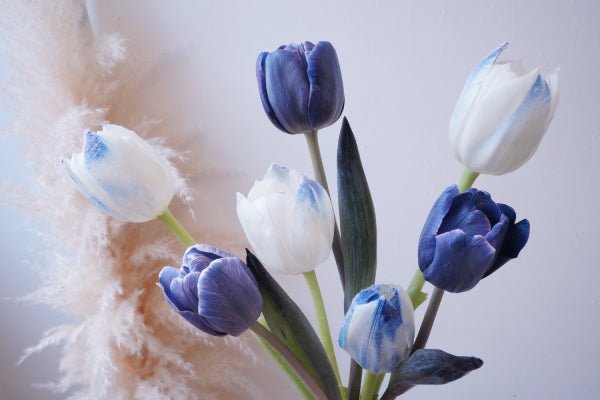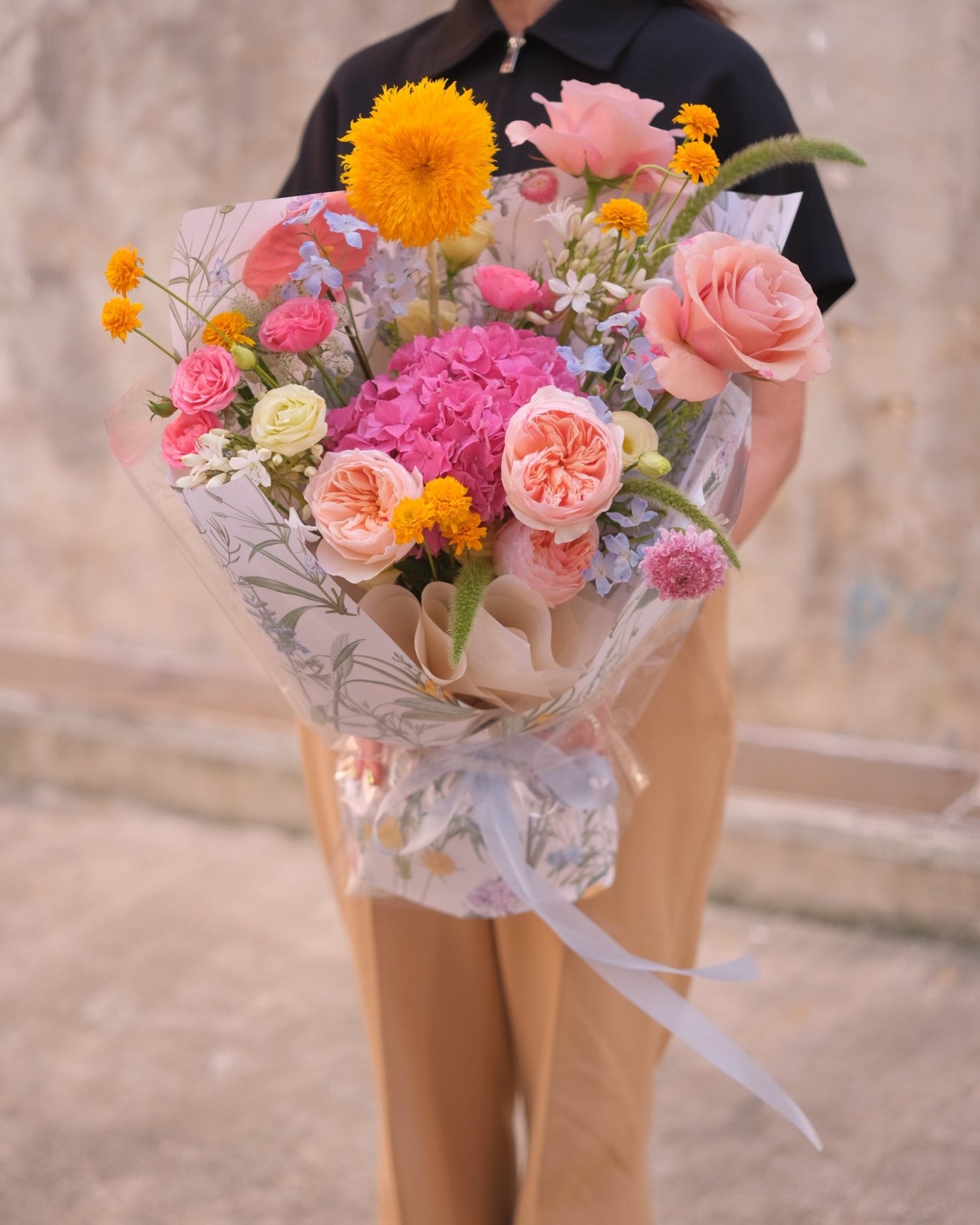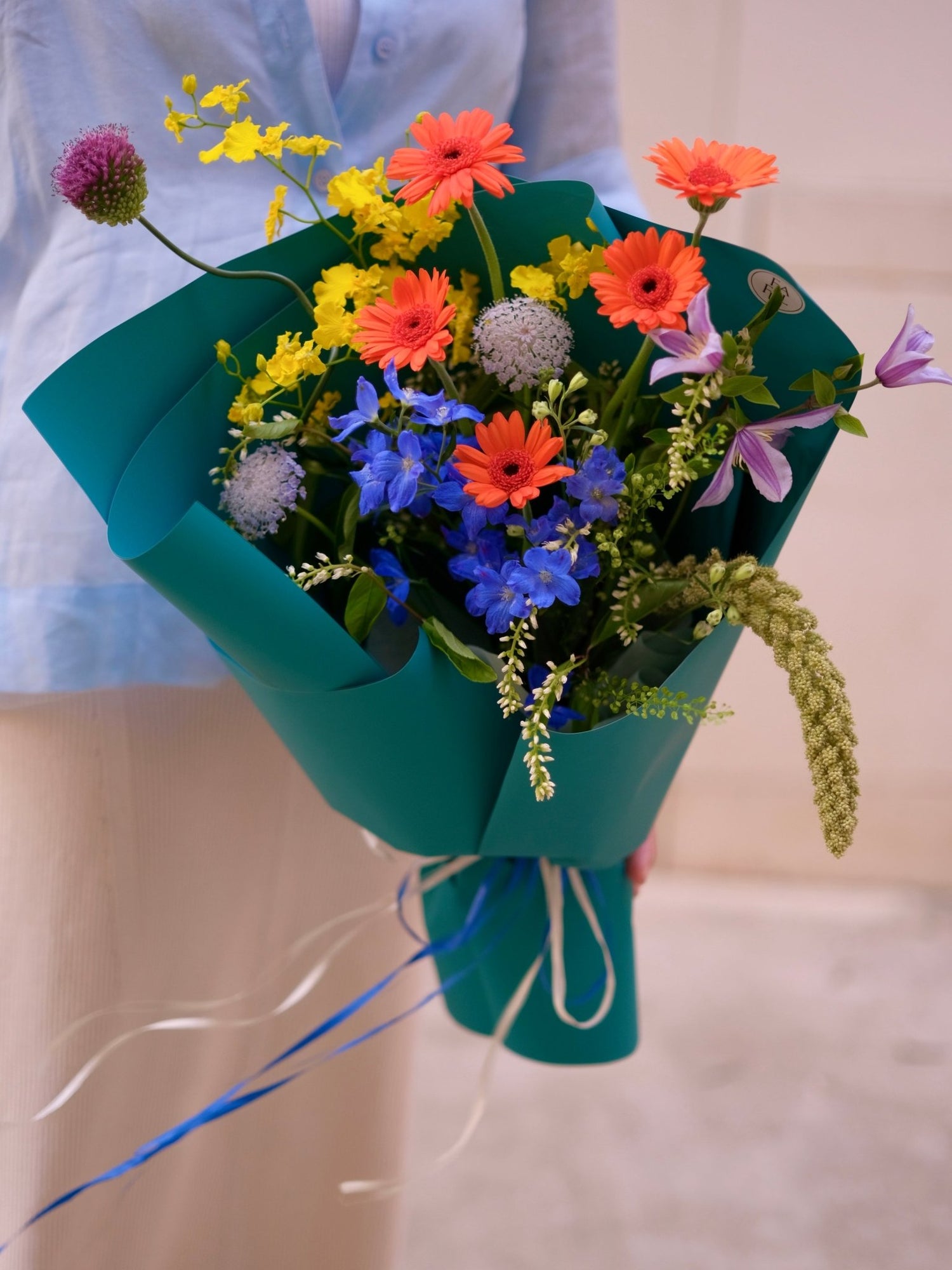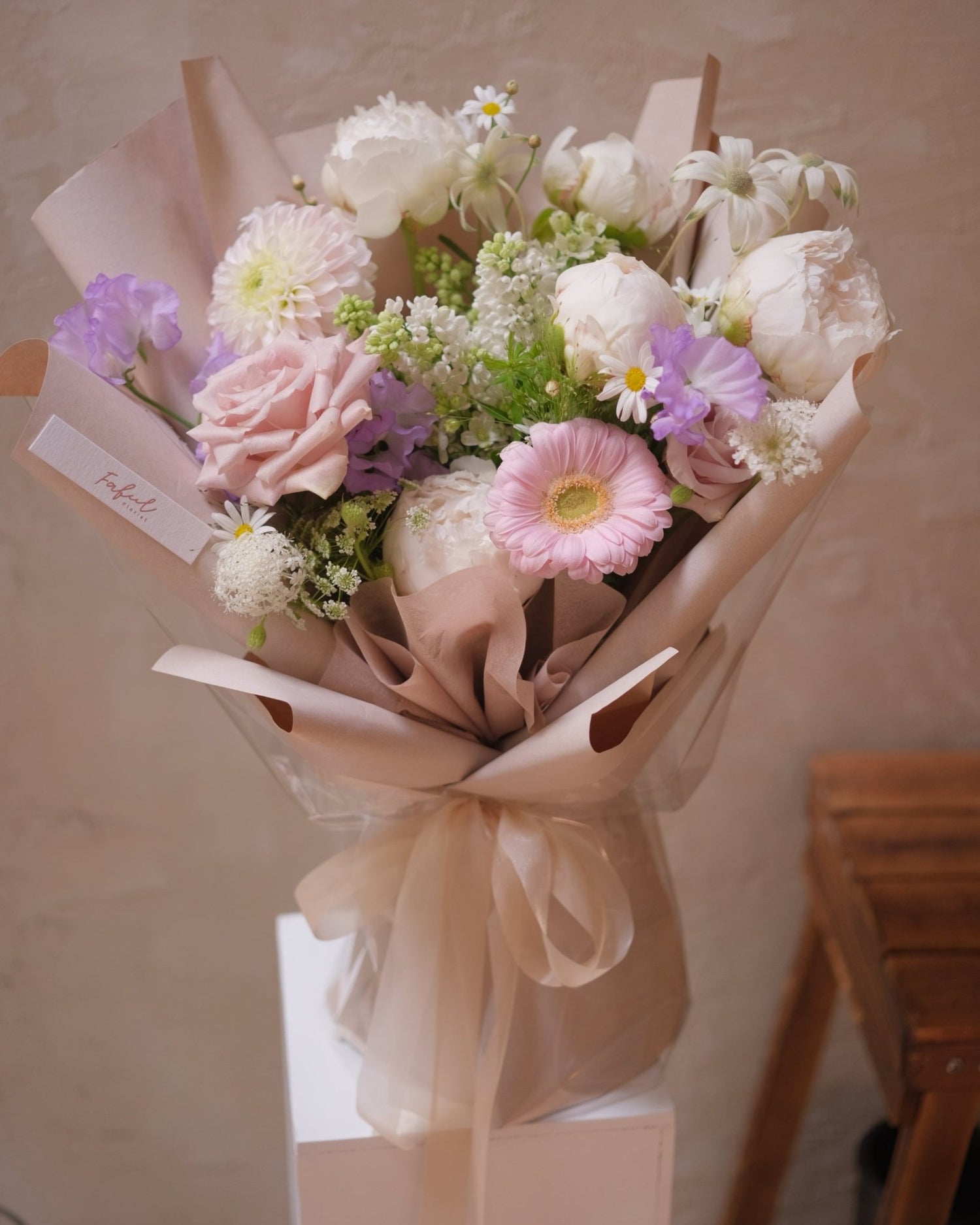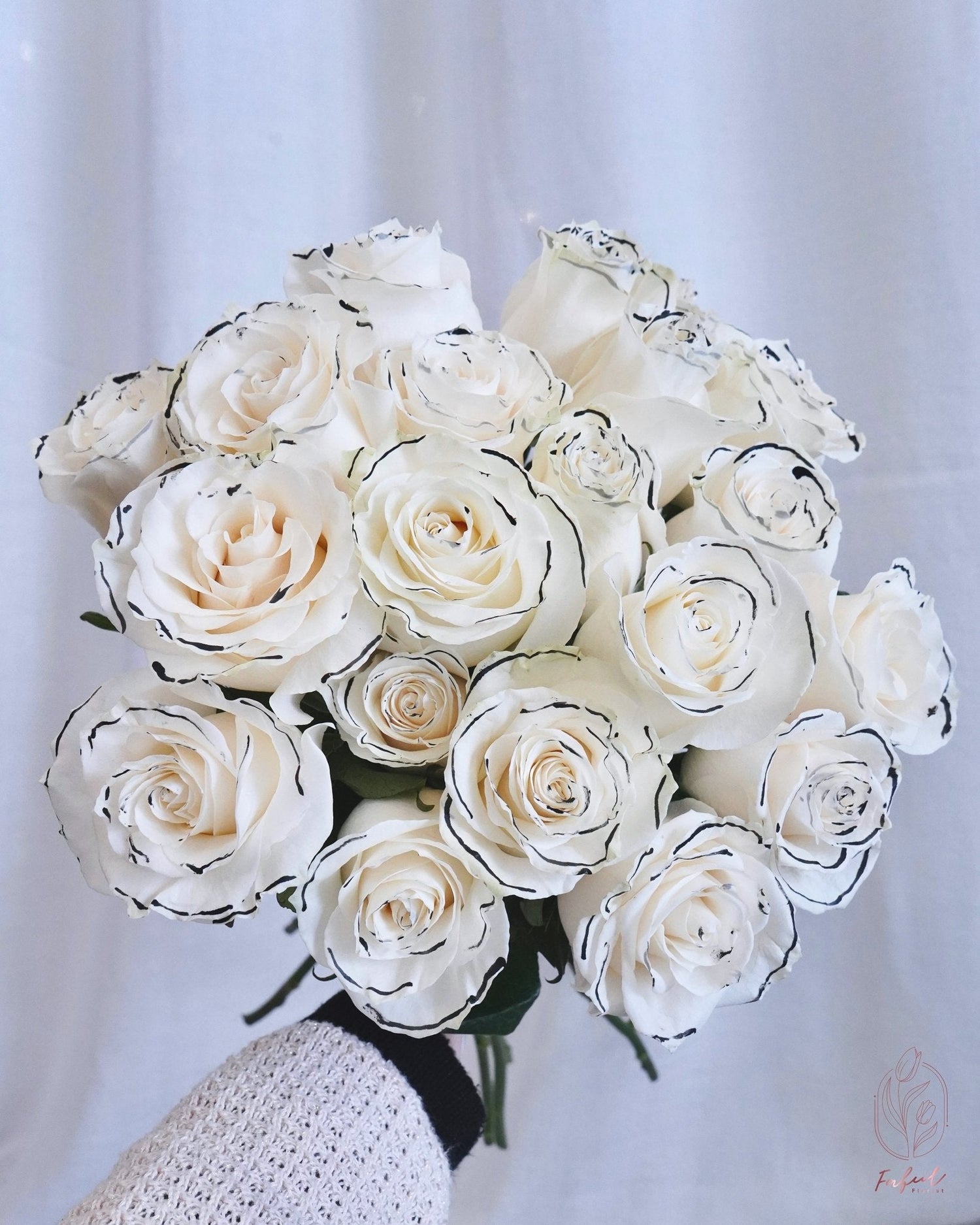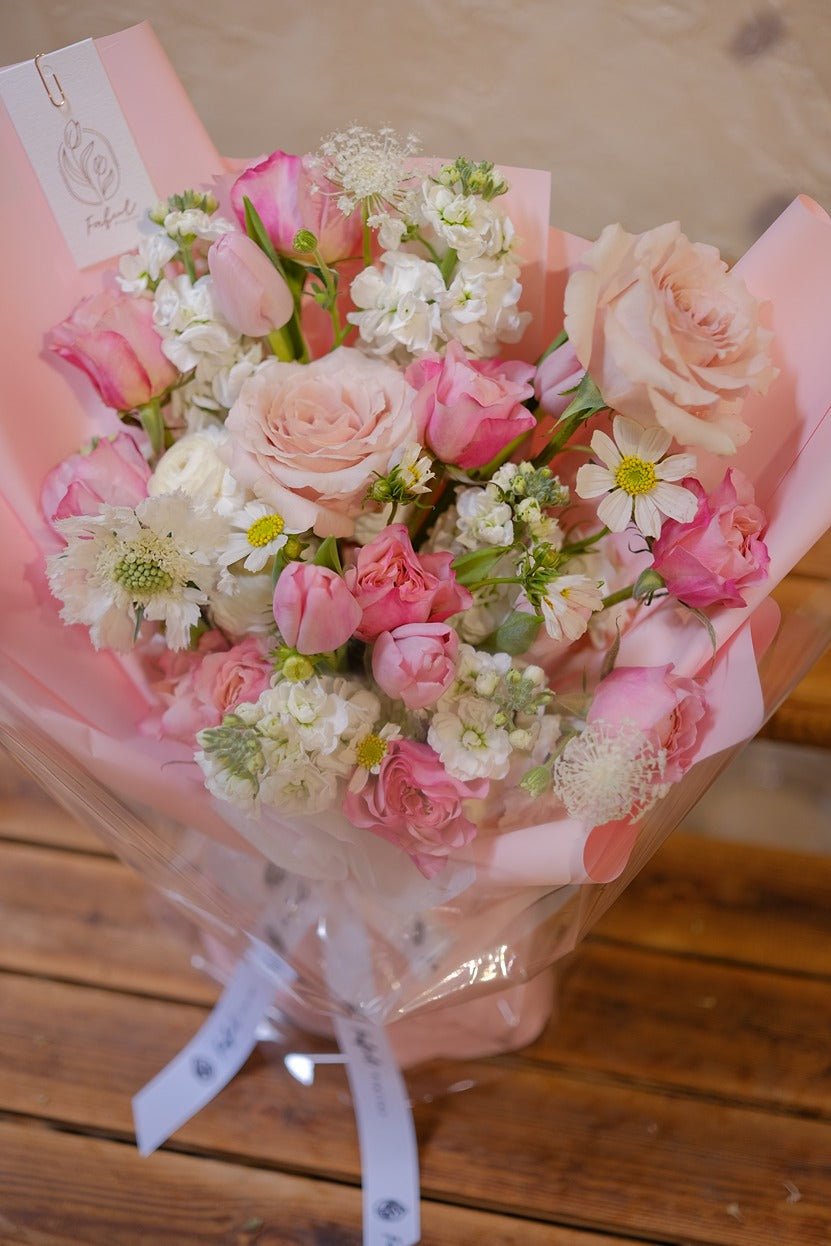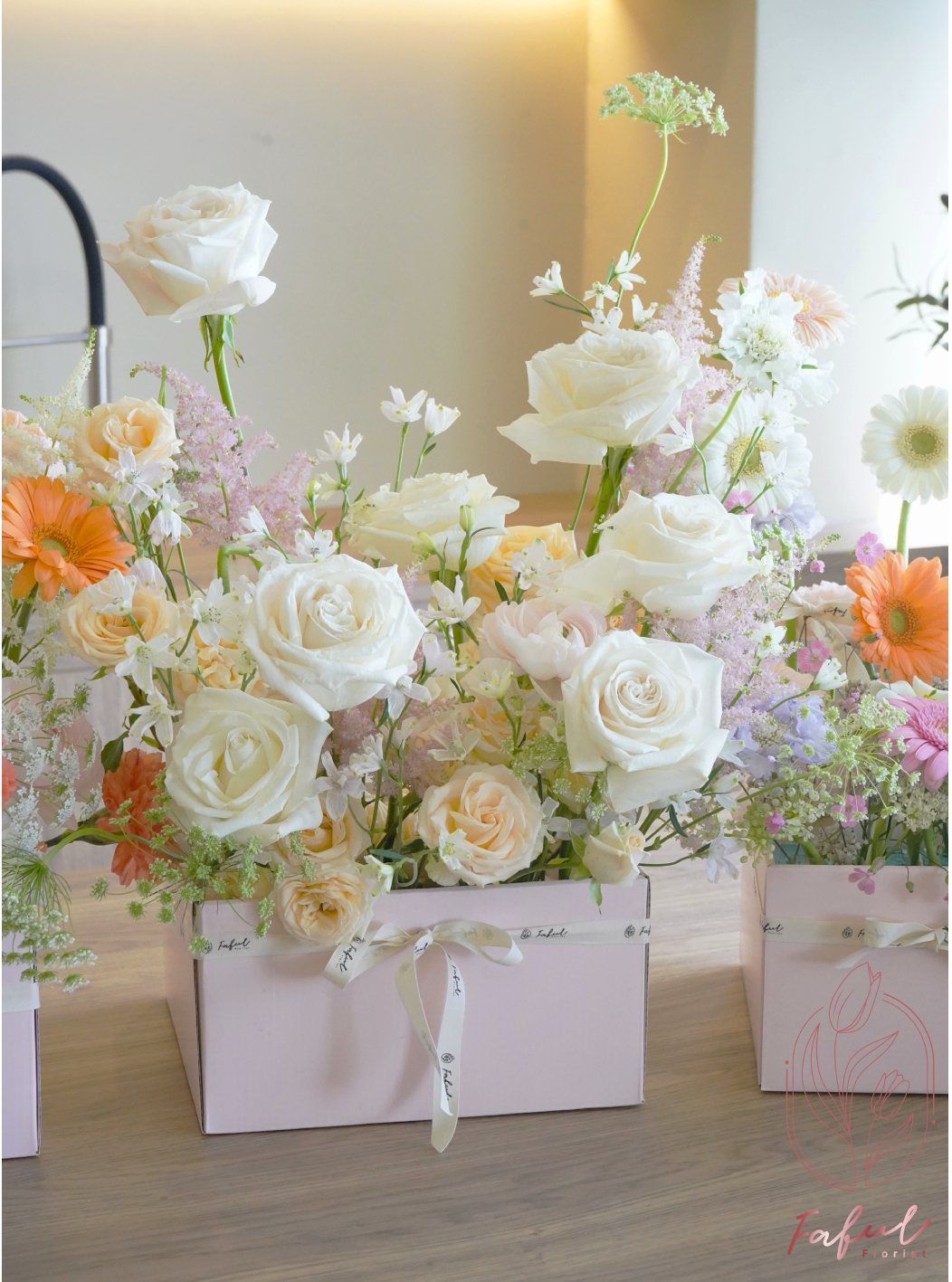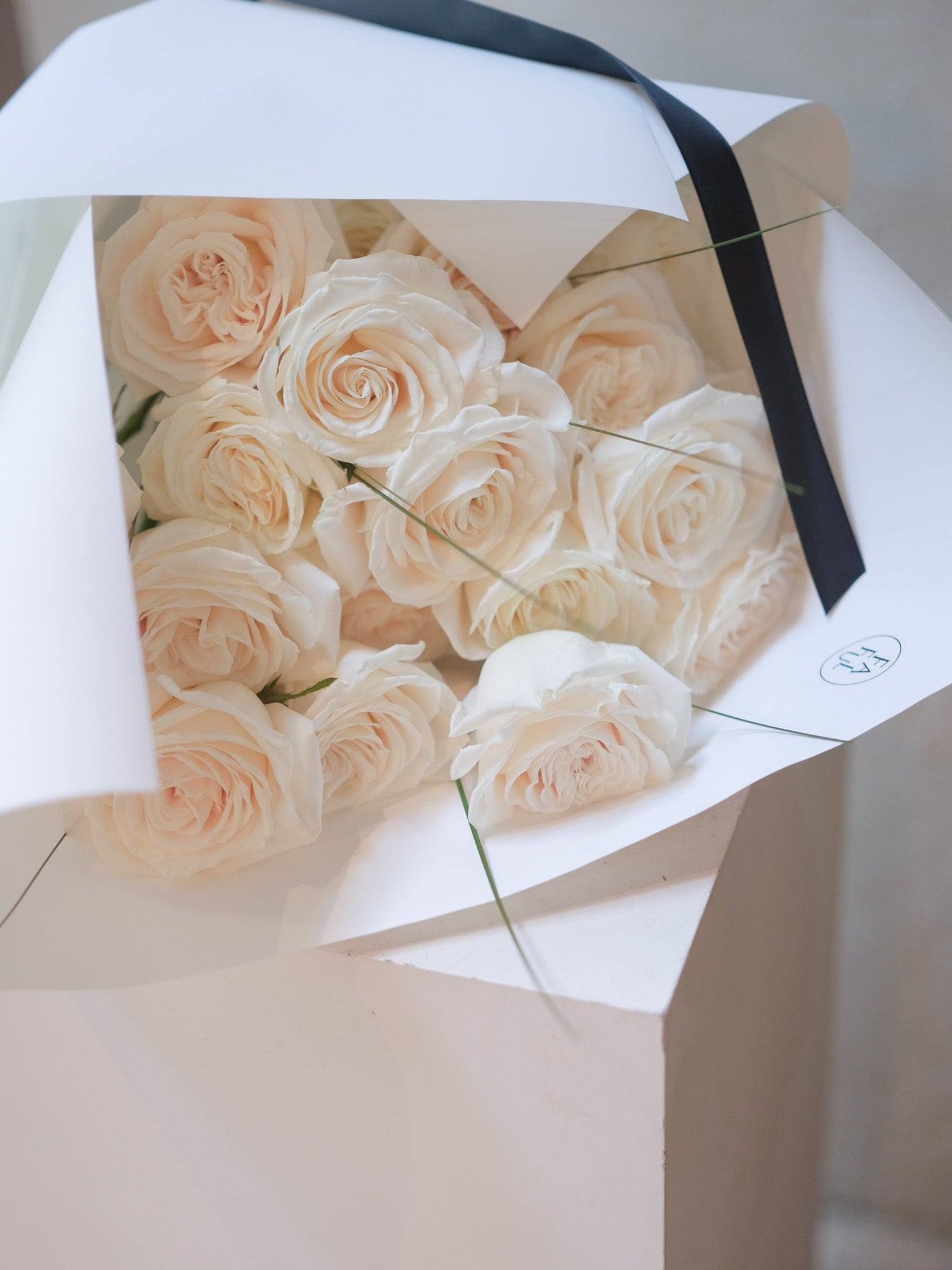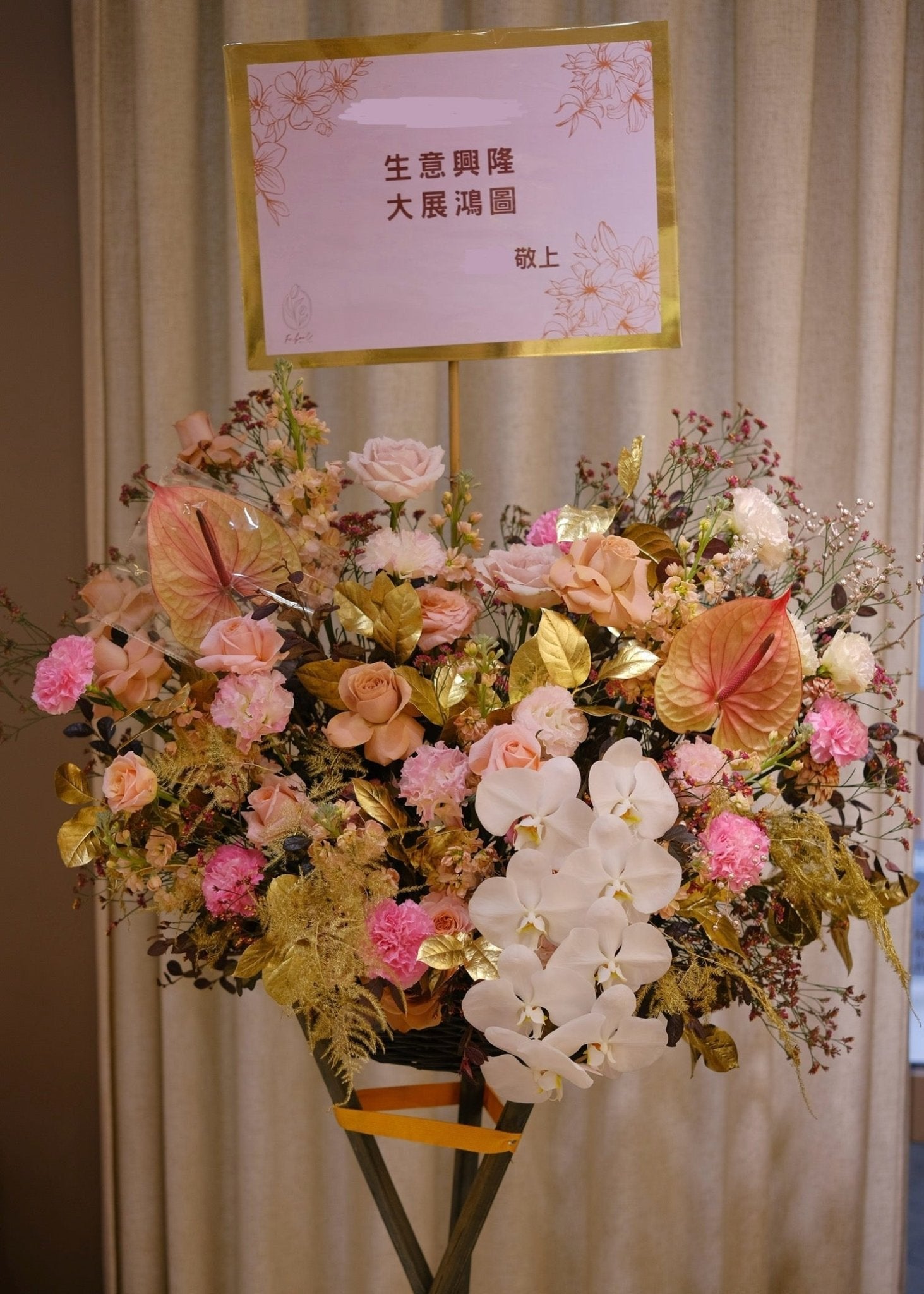Tulip Meaning: More than just a Springtime Icon
Estimated reading time: 7 minutes
Table of Contents
- The Story of Tulips: From Ottoman Splendor to Dutch Mania
-
Decoding the Tulip Meaning Rainbow: A Spectrum of Significance
- Red Tulip Meaning: An Undeniable Declaration of Love
- Yellow Tulip Meaning: Sunshine and Shadow
- White Tulip Meaning: Purity and Parting
- Purple Tulip Meaning: Royalty, Respect, and Romance
- Pink Tulip Meaning: Affection, Happiness, and New Love
- Orange Tulip Meaning: Energy, Enthusiasm, and Warmth
- Beyond the Basics: Rarer Tulip Meanings in Hues and Patterns
- Choosing Your Message: Gifting Tulips with Intent
- Conclusion: The Enduring Tulip Meaning
Tulips. Instantly recognizable, they paint landscapes with vibrant color each spring, often conjuring images of Dutch windmills and sprawling fields. Their elegant, cup-shaped blooms are admired worldwide. But beneath this familiar beauty lies a hidden layer of meaning, a secret language whispered through petals. Do you really understand tulips?
This article delves into the captivating world of tulip meaning. We will trace the tulip's extraordinary past, decode the specific messages hidden within each color of the rainbow – from passionate reds to enigmatic purples – and offer guidance on how to use this knowledge to choose blooms with intention. Prepare to see the humble tulip in a whole new light.

The Story of Tulips: From Ottoman Splendor to Dutch Mania
The tulip's journey through history is dramatic. Its story begins long before Holland, starting in the East, intertwined with legends, empires, and an economic frenzy.
The Maiden's Choice: Legend of the Tulip's Form
In European legend, a beautiful maiden was pursued by three knights offering a crown, sword, and gold. Torn, she asked the goddess Flora for help and was transformed into a tulip: the bloom representing the crown, the leaves the sword, and the bulb the gold, symbolizing her acceptance of all their love. Thus, the tulip became a symbol of love's declaration and value, foreshadowing its later status.
True Origins: From Asian Mountains to Ottoman Gardens
Tulips originated not in the Netherlands, but in the Tian Shan mountains of Central Asia. Wild tulips flourished there before being cultivated by Persians and Turks. By the 10th or 11th century, tulips were grown in Persia and Anatolia.
The Ottoman Embrace: Symbol of Paradise and Power
The tulip reached its cultural peak in the Ottoman Empire. Sultans became deeply fascinated, and from the 16th century, tulips were widely cultivated, becoming a powerful symbol. The tulip (Lale) had divine connotations due to phonetic and numerological links to "Allah," seen as a symbol of paradise, wealth, power, and humility. This reverence permeated art, clothing, and poetry. The famous "Tulip Era" (early 18th century) marked a period of intense cultural focus on the flower, symbolizing the empire's grandeur.

Arrival in Europe and the Dutch Golden Age
Tulips arrived in Western Europe in the late 16th century, possibly named "tulip" from a misunderstanding of the Turkish word for turban ("tülbent"). Botanist Carolus Clusius brought them to Leiden University's botanical garden in 1593, where the Dutch climate proved ideal. Clusius also documented "broken" tulips (caused by a virus), whose unique patterns became highly sought after.
Tulip Mania (Tulpenmanie): Beauty Turns to Madness
During the Dutch Golden Age, tulips, especially the rare broken varieties, became status symbols. Between roughly 1634-1637, this escalated into "Tulip Mania," one of history's first speculative bubbles. Speculators drove prices to astronomical levels; rare bulbs reportedly traded for houses. The bubble burst in 1637, prices plummeted, ruining many. This event became a historical lesson on collective frenzy inflating asset prices beyond value, though its broader economic impact was limited, it spurred cultural reflection and satire.
The Tulip Today: A Dutch Icon and Global Favorite
Despite the mania, the tulip became inextricably linked with the Netherlands, eventually becoming its national flower and a cornerstone of its horticulture and tourism. The Netherlands remains the world's largest tulip producer. Tulips are cherished globally, used in gardens and celebrations, retaining significance in Turkey and Iran, with China emerging as a major producer. The tulip's journey highlights its enduring appeal.

Decoding the Tulip Meaning Rainbow: A Spectrum of Significance
Beyond its dramatic history, the tulip carries a rich language expressed through its diverse colors. While the flower generally symbolizes concepts like love (often described as "perfect love" or a "declaration of love"), beauty, elegance, fame, charity, wealth, and eternal blessing, each hue offers a more specific nuance, allowing for tailored messages. These meanings often echo the themes found in the maiden legend – love, value, and beauty.
Red Tulip Meaning: An Undeniable Declaration of Love
Universally recognized, the red tulip is a bold and passionate statement. Much like the red rose, it signifies deep love, intense passion, desire, and romance. Its primary message is often interpreted as a direct "declaration of love," conveying sentiments like "I love you" or "Believe me." The fiery hue embodies warmth, strong emotions, and commitment.
Occasions: Red tulips are the quintessential choice for romantic partners, perfectly suited for Valentine's Day, anniversaries, proposals, or any moment meant to express profound love and affection. They can also convey joy and heartfelt warmth.
Yellow Tulip Meaning: Sunshine and Shadow
Yellow tulips present a fascinating duality in their symbolism, a key aspect of tulip meaning.
Positive Meanings: Predominantly today, yellow tulips are associated with sunshine, happiness, cheerfulness, and hope. They are strongly linked to friendship, positive thoughts, and conveying warmth. Some traditions also connect them to wealth, prosperity, elegance, victory, and fame. The message can be as simple and bright as "There's sunshine in your smile."
Negative Meanings: However, a persistent, though perhaps less common today, interpretation links yellow tulips to negative emotions. This includes hopeless or unrequited love, jealousy, and rejection. This darker meaning might stem from the complex symbolic codes of the Victorian era or specific cultural contexts.
Occasions: Given their predominantly cheerful association, yellow tulips are excellent gifts for friends (to celebrate friendship, offer cheer, or express thanks), colleagues, and family members. They are suitable for celebrating achievements, wishing good luck, or simply brightening someone's day. However, due to the lingering negative connotation, caution is advised when gifting them in a purely romantic context, as the message could potentially be misinterpreted. This striking contrast highlights how flower language, and specifically tulip meaning, can evolve and vary.

White Tulip Meaning: Purity and Parting
Similar to yellow, white tulips carry a dual symbolic weight.
Positive Meanings: Primarily, white tulips represent purity, innocence, and pure love. They signify sincerity, respect, honor, and new beginnings. They can also be used to convey an apology or ask for forgiveness.
Negative Meaning: Conversely, white tulips can symbolize lost or ended love, mourning, or parting. This association aligns with the use of white flowers in some cultures for funerals or remembrance.
Occasions: Their association with purity makes white tulips suitable for weddings, baptisms, and celebrating new beginnings. They are appropriate for expressing sincere apologies or conveying respect. While sometimes used for condolences, the potential "lost love" meaning requires careful consideration of the specific context and relationship. Understanding this nuanced white tulip meaning is important.
Purple Tulip Meaning: Royalty, Respect, and Romance
Purple has long been associated with royalty, and purple tulips carry this connotation strongly.
Meanings: They symbolize royalty, nobility, luxury, elegance, and grandeur. Beyond status, they also convey admiration, respect, and dignity. In the realm of love, purple tulips represent deep, loyal, endless, or eternal love, often with a touch of mystery or fascination.
Occasions: Purple tulips are an excellent choice for expressing admiration or respect towards a mentor, teacher, elder, or someone celebrating a significant achievement like a promotion. They can signify deep and lasting romantic love or add an air of sophistication and elegance to formal events or bouquets. The purple tulip meaning conveys noble sentiments.

Pink Tulip Meaning: Affection, Happiness, and New Love
Softer and gentler than red, pink tulips convey warmth, affection, and happiness.
Meanings: They represent care, good wishes, happiness, confidence, and beauty (sometimes specifically referring to the recipient as a "beautiful person"). Romantically, they signify tender love, the beginning of love ("love's emergence"), eternal love, and romance. They embody a sense of youthfulness and gentle affection.
Occasions: Pink tulips are versatile, suitable for friends, family (they are a lovely choice for Mother's Day, symbolizing gentle love and care), and budding relationships. They are perfect for birthdays, graduations, get-well messages, or simply expressing fondness and sending positive vibes. The pink tulip meaning is full of warmth.

Orange Tulip Meaning: Energy, Enthusiasm, and Warmth
Vibrant and warm, orange tulips radiate energy and positivity.
Meanings: They symbolize energy, enthusiasm, vitality, warmth, happiness, and passion. They can also represent understanding, appreciation, gratitude, kindness, and thoughtfulness. Orange tulips may signify a strong bond or connection between people, representing shared warmth and mutual understanding, or cherished memories and an enduring relationship.
Occasions: These tulips are ideal for encouraging someone, expressing thanks or appreciation to friends or colleagues, celebrating successes, or wishing someone well. They can symbolize the warmth and comfort of an established relationship, whether platonic or romantic. The orange tulip meaning brings vitality.

Beyond the Basics Tulip Meaning: Rarer Hues and Patterns
The language of tulips extends beyond the most common solid colors:
-
Variegated/Mixed Tulip Meaning: Tulips with multiple colors or striped patterns often carry specific meanings. A common interpretation is "beautiful eyes," perhaps alluding to their captivating appearance. They can also signify "happy encounters" or simply "beautiful you." Mixed-color bouquets can represent complex or multiple emotions simultaneously. Specific combinations might have unique meanings, such as red and yellow suggesting happiness and good luck, while pink and white imply friendship and harmony. Historically, the most prized variegated tulips were the "broken" varieties caused by a virus during Tulip Mania, admired for their unpredictable beauty. Variegated tulip meaning is often linked to beauty and encounters.
-
"Black" Tulip Meaning: Though not truly black (usually a very deep, dark purple or maroon), these tulips exude an air of mystery and sophistication. They often symbolize power, strength, elegance, royalty, and uniqueness. Some interpretations include knightly spirit, honor, or even a melancholic or tragic love. Their perceived rarity enhances their mystique and value. A few sources associate them with sadness or the end of love. Black tulip meaning is full of mystery.

-
Blue Tulip Meaning: Representing the unattainable or the extraordinary, blue tulips symbolize uniqueness, mystery, tranquility, peace, trust, and loyalty. They can signify an unpredictable future or a deep, perhaps enigmatic, love. It's important to note that naturally occurring blue tulips do not exist; they are typically created through dyeing or genetic modification, which further emphasizes their symbolism of rarity and the extraordinary. Blue tulip meaning points to uniqueness and tranquility.
-
Green Tulip Meaning: Often featuring green flares or streaks on their petals (Viridiflora group), green tulips symbolize renewal, rebirth, hope, fresh starts, good fortune, and good health. They connect directly to nature and vitality.
- Gold Tulip Meaning: Distinct from yellow, gold tulips carry connotations of greater grandeur and celebration. They symbolize congratulations, prosperity, achievement, and good fortune, making them suitable for marking significant milestones or offering best wishes.
The symbolism attached to these rarer or artificially achieved colors—black, blue, green—often seems directly tied to their perceived uniqueness or unnaturalness. Their scarcity or deviation from the norm amplifies meanings like mystery, the unattainable, specialness, or renewal, suggesting that human perception of rarity inherently shapes the symbolic value assigned to them.

Choosing Your Message: Gifting Tulips with Intent
Understanding tulip meaning transforms the simple act of giving flowers into a thoughtful and personalized message. By consciously choosing colors, a bouquet becomes a silent yet eloquent expression of emotion.
Matching Color to Occasion and Recipient
Based on the decoded tulip meaning, here are some suggestions for choosing the right tulip color:
-
Romantic Love
- Passionate/Deep Love: Red is the classic choice.
- Tender/New Love: Pink conveys affection and budding romance.
- Eternal/Loyal Love: Purple signifies depth and lasting commitment.
- Established Warmth/Comfort: Orange suits long-term relationships.
-
Pure Intentions/Apology: White can express sincerity, but use cautiously due to potential negative meanings. Be mindful of the potential negative tulip meaning of yellow and white in romantic contexts.
-
Friendship:
- Cheer/Gratitude: Yellow is ideal for brightening a friend's day or saying thanks.
- Care/Good Wishes: Pink expresses fondness and support.
- Warmth/Appreciation: Orange conveys enthusiasm and gratitude for the bond.
-
Pure Friendship: White can symbolize the sincerity of the platonic bond.
-
Respect and Admiration:
- Nobility/High Regard: Purple is perfect for mentors, elders, or respected figures.
-
Honor/Sincerity: White conveys respect and pure intentions.
-
Celebrations (Birthdays, Graduations, Promotions):
- Happiness/New Beginnings: Pink suits celebratory occasions.
- Joy/Success: Yellow brings cheer and congratulates achievements.
- Enthusiasm/Congratulations: Orange expresses excitement for their success.
-
Grand Congratulations: Gold marks significant achievements.
-
Get Well Wishes and Encouragement:
- Cheerfulness: Yellow offers a sunny disposition.
- Energy/Warmth: Orange provides a boost of vitality and care.
-
Care/Affection: Pink sends gentle well wishes.
-
Apology or Sympathy:
- Sincerity/Forgiveness: White can signify apology and pure intentions. However, use white for sympathy with caution, due to the "lost love" tulip meaning; context is paramount.
- Warmth/Comfort: Red tulips can also offer comfort and warmth during difficult times.

Product: Born of love | Pink Tulip
Considering Nuances
When selecting tulips, always remember the potential for dual meanings, particularly with yellow and white varieties. Consider your specific relationship with the recipient and the context of the gift. Cultural background and personal associations can also influence how a flower's color is perceived. Taking these factors into account ensures your floral message, your intended tulip meaning, is received as intended.
Tulip Meaning Quick Guide by Color
For easy reference, here is a summary of tulip color meanings and suitable occasions:
| Color | Primary Positive Meaning(s) | Potential Negative/Nuanced Meaning(s) | Suitable Occasions/Recipients |
|---|---|---|---|
| Red | Deep love, passion, declaration of love, romance, joy | - | Romantic partners (Valentine's, anniversaries, proposals), expressing deep affection |
| Yellow | Friendship, cheerfulness, happiness, hope, wealth, success | Hopeless love, jealousy, rejection | Friends, colleagues, family; celebrating achievements, get well, cheering up |
| White | Purity, innocence, pure love, respect, new beginnings, apology | Lost love, mourning | Weddings, baptisms, apologies, expressing respect; use cautiously for sympathy |
| Purple | Royalty, nobility, elegance, admiration, respect, deep/eternal love | Mystery | Expressing admiration/respect (mentors, elders), promotions, deep love, formal events |
| Pink | Affection, care, happiness, good wishes, gentle/new/eternal love | - | Friends, family (Mother's Day), new relationships, birthdays, graduations, get well |
| Orange | Energy, enthusiasm, warmth, happiness, appreciation, gratitude | Desire | Encouragement, expressing thanks (friends, colleagues), celebrating success, warm relationships |
| Variegated | Beautiful eyes, happy encounters, complex emotions | Virus-induced (historically) | Adding visual interest, expressing admiration, celebrating encounters |
| Black | Mystery, power, elegance, uniqueness, royalty | Melancholy love, sadness | Making a unique statement, expressing deep admiration or fascination |

Conclusion: The Enduring Tulip Meaning
The tulip's story is one of extraordinary transformation. From its humble origins in the mountains of Central Asia, it journeyed westward to become a revered symbol in the mighty Ottoman Empire, synonymous with paradise and power. Its arrival in Europe sparked horticultural passion that famously escalated into the speculative frenzy of Dutch Tulip Mania, before settling into its role as a beloved global flower and an enduring icon of the Netherlands.
Throughout this incredible history, the tulip has accumulated a rich and complex symbolic language. As we've seen, its various colors speak volumes, capable of conveying the entire spectrum of human emotion – from the fiery declaration of red's passionate love to the cheerful sunshine of yellow's friendship, the noble respect of purple, and the tender affection of pink. Fusing history, legend, and evolving cultural perceptions, the tulip meaning embedded in each hue offers a fascinating glimpse into how we communicate our deepest feelings.
Even in our modern world, understanding this hidden tulip meaning adds a profound layer of appreciation to the tulip's simple beauty. It allows us to choose and give these flowers with greater intention, transforming a beautiful bloom into a meaningful connection across time, echoing centuries of human emotion expressed through the silent, eloquent language of flowers. The next time spring arrives and tulips unfurl their vibrant petals, perhaps take a moment to look closer, listen quieter, and appreciate the stories they continue to tell.

If you are captivated by the tulip meaning, we invite you to explore our tulip bouquets collection to learn more about our products. Come visit our flower shop and discover a whole new world of flowers!



